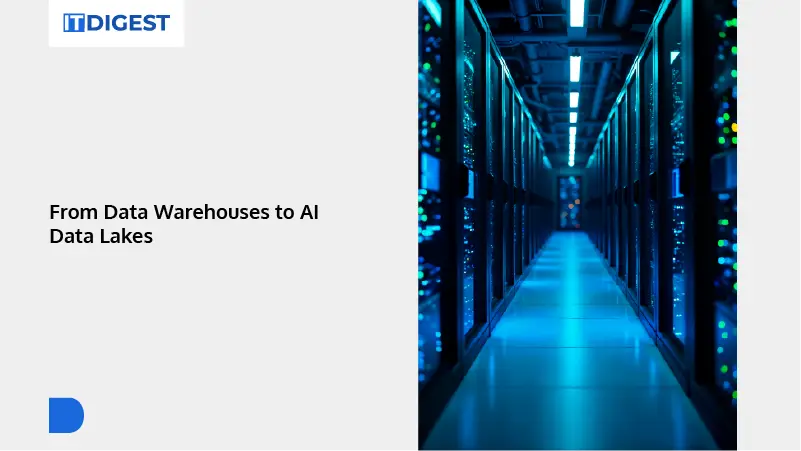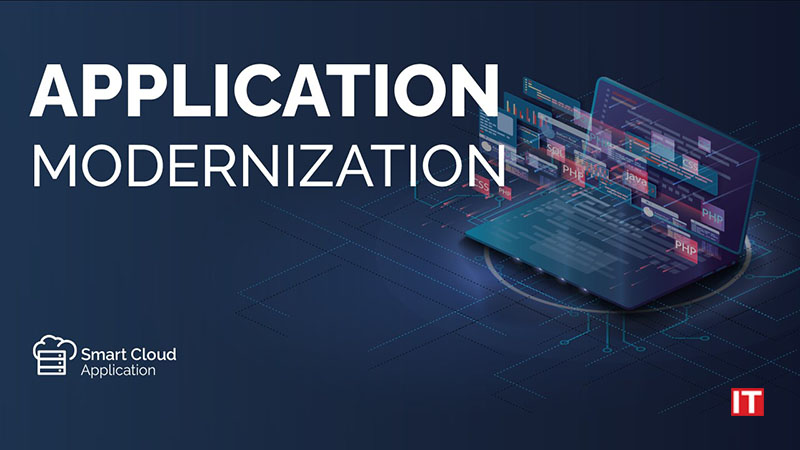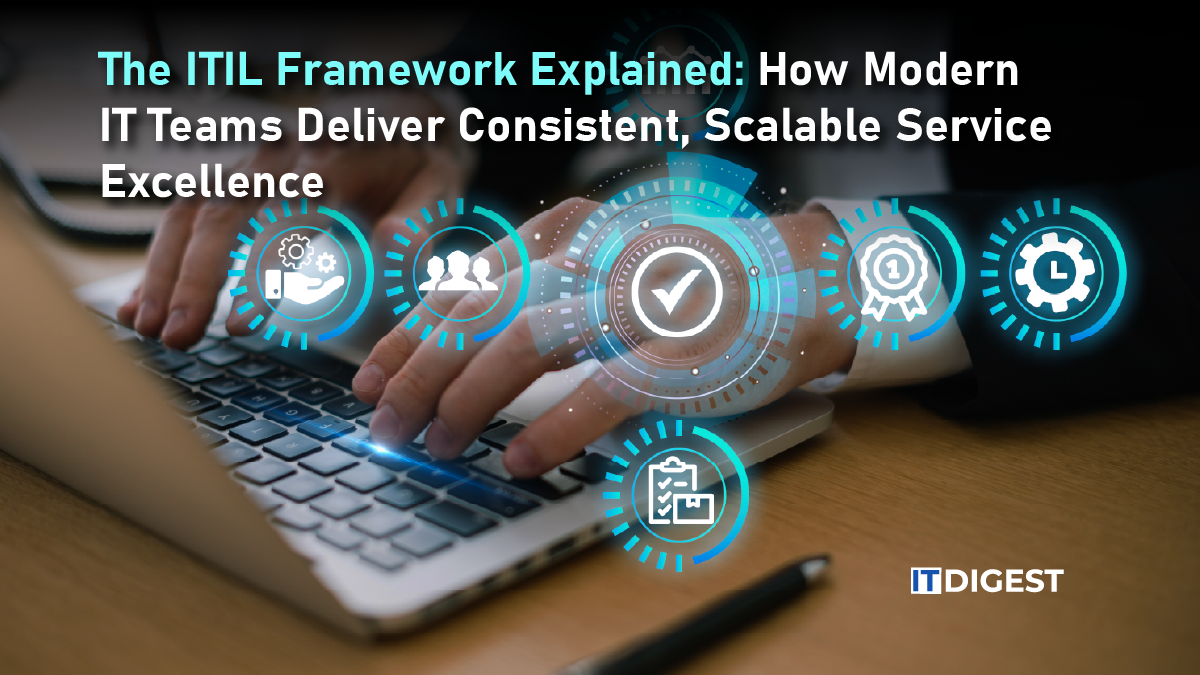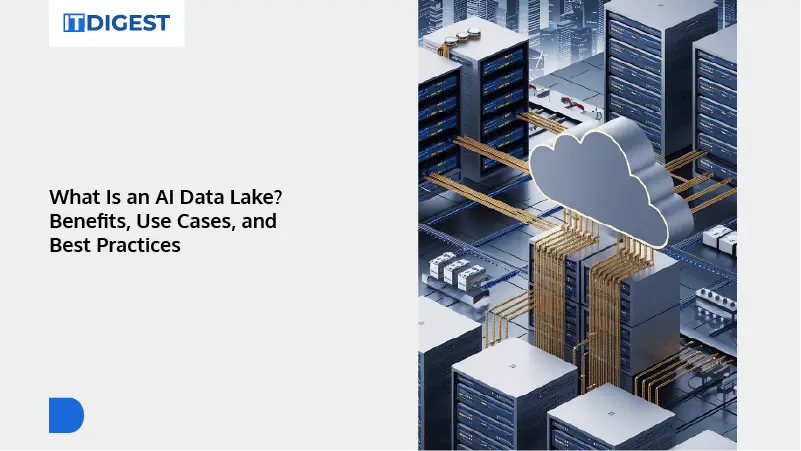Today companies have more data than ever. Data from applications, sensors, users, transactions and third-party systems. Traditional databases and warehouses can’t keep up with the volume, velocity and variety. AI data lakes are the answer. They allow you to store, manage and analyze large volumes of structured and unstructured data in one place.
An AI data lake is a big storage repository that supports AI and machine learning workloads. It lets raw data in, organized and accessed by analytics. Unlike traditional data warehouses that require schema definition up front, data lakes store data as is. This means data scientists and AI models can access more inputs, experiment fast and find patterns that traditional systems miss.
For CIOs, IT leaders and data folks, knowing how to build and manage an AI data lake is table stakes. It’s not just about storage. It’s about building a data foundation that supports autonomous decision making, predictive modeling and next-gen digital services.
From Data Warehouses to AI Data Lakes
Data warehouses have been the standard for business intelligence. They organize data into structured tables, optimize for queries and work well when data formats are known and consistent. But modern use cases require more flexibility. Companies now deal with streaming data, social media inputs, image files and logs. AI systems need this variety to train accurate models.
The concept of a data lake was born to handle this complexity. It provides a central pool where data is stored in raw format until it’s needed. This reduces the time and cost of preparation. It also makes it easier to run exploratory analysis or train AI models that need access to full datasets without transformation bias.
What distinguishes an AI data lake from a basic data lake is the integration of machine learning tools, metadata layers and governance frameworks tailored to AI workflows. These add-ons allow teams to go from data ingestion to insight faster. They also improve traceability and model performance monitoring. In this sense an AI data lake is not just a repository. It’s a launch pad for intelligent applications.
Key Benefits for Modern Businesses
The benefits of AI data lakes go beyond storage. They offer strategic capabilities that support innovation, efficiency and agility. One of the main benefits is scalability. AI data lakes are often built on cloud-native infrastructure which makes them elastic. As data grows the system expands without performance loss.
According to a 2024 US Department of Energy report, data centers consumed 4.4% of total US electricity in 2023. That’s up from 58 TWh in 2014 to 176 TWh in 2023. By 2028, data center consumption will be between 6.7% and 12% of national electricity use. That’s 325-580 TWh. Most of that growth is due to AI processing demands, so we need efficient, scalable architectures like AI data lakes.
Companies have more data than ever. Data from applications, sensors, users, transactions and third-party systems. Traditional databases and warehouses can’t handle the volume, velocity and variety. AI data lakes are the answer. They allow you to store, manage and analyze large amounts of structured and unstructured data in one place.
A data lake is a scalable storage repository for AI and machine learning. It ingests raw data, organizes and allows advanced analytics to access it. Unlike traditional data warehouses that require schema definition upfront, data lakes store data as is. This allows data scientists and AI to access more inputs, experiment fast and find patterns that traditional systems miss.
For CIOs, IT leaders and data professionals, understanding how to build and manage an AI data lake is becoming essential. It’s not just about storage. It’s about building a data foundation that supports autonomous decision making, predictive modeling and next-gen digital services.
Also Read: How Distributed Databases Enhance Data Availability and Reliability
From Data Warehouses to AI Data Lakes
Data warehouses have been the standard for business intelligence. They organize data into structured tables, optimize for queries and work well when data formats are known and consistent. But modern use cases require more flexibility. Companies now deal with streaming data, social media inputs, image files and logs. AI systems need this variety to train accurate models.
The concept of a data lake was born to handle this complexity. It provides a central pool where data is stored in raw format until it’s needed. This reduces the time and cost of preparation. It also makes it easier to run exploratory analysis or train AI models that need access to full datasets without transformation bias.
Key Benefits for Modern Businesses
The benefits of AI data lakes go beyond storage. They offer strategic capabilities that support innovation, efficiency and agility. One of the main benefits is scalability. AI data lakes are often built on cloud-native infrastructure, which makes them elastic. As data grows, the system expands without performance loss.
Security and governance is the foundation. With big data and many users, policies must control who can see what. Role-based access, encryption and audit logs are standard. Compliance to industry standards is key especially in regulated industries.
The last layer is integration. AI data lakes should connect easily to analytics platforms, modeling tools and visualization dashboards. This interoperability ensures data flows across systems without duplication or friction.
Deployment Strategies for AI Data Lakes
Choosing the right deployment model for an AI data lake depends on your infrastructure, compliance requirements and data maturity. Many organizations start with cloud-native platforms. These offer rapid scalability, integrated services and cost transparency. Public cloud vendors provide tools for storage, processing and machine learning that are pre-integrated with their data lake offerings.
For organizations with strict data residency or security requirements, hybrid deployment is an option. Sensitive data stays on premise, non-sensitive workloads run in the cloud. This gives you flexibility without sacrificing control. Hybrid deployments are used in industries like finance, healthcare and defense where compliance is tight.
On-premise data lakes suit high-security setups or limited cloud access. They need more investment in hardware and upkeep. These setups offer full control but need planning and skilled staff. No matter the model, portability should stay a priority.
Whatever the model, organizations should focus on portability. Vendor lock-in can limit innovation. Open formats, containerized tools and API-based architectures help keep things modular and adaptable.
In April 2025, Huawei launched its AI Data Lake Solution at the IDI Forum in Munich. This platform integrates storage, metadata and AI pipelines into one system. The goal is to accelerate AI training and inference across industries by simplifying ingestion, scaling and governance. It’s a real-world example of how vendors are operationalizing AI data lakes for enterprise use.
Data Quality and Lifecycle Management
The value of an AI data lake is in its content. Storing large amounts of data without context or validation can lead to noise and bias. Data lakes without oversight become data swamps. To prevent this, governance must be embedded from the start. Lifecycle management helps with cost and usability. Not all data needs to live forever. Archiving old files, deleting redundant entries and tagging high-value assets keeps the data lake lean and relevant. Tiered storage also helps with efficiency. Frequently used files are kept in fast-access tiers, historical data is moved to lower-cost options.
Data validation pipelines catch anomalies, missing fields or formatting issues early in the process. This reduces errors in downstream AI models. Standardizing how data is labeled and categorized helps with consistency across departments. This is especially important in organizations where multiple teams touch the same data lake.
Data engineers, scientists and business teams need to collaborate. A centralized stewardship model helps manage data better. Automated quality checks add another layer of control. Together, they ensure data stays accurate and models work well.
Common Mistakes to Avoid
Many AI data lake projects fail because they miss the foundation. One common mistake is to treat the data lake as a dumping ground. Without structure and planning, the system becomes bloated and unusable. Every data entry should have a purpose, owner and expiration plan.
You’re underestimating metadata. Data without context is useless. Tagging files, recording lineage and adding schema hints saves time and reduces duplication.
Not aligning data lake investments with business goals is another risk. Technology for its own sake rarely delivers ROI. A good AI data lake strategy starts with clear questions. What decisions will the data support? Which processes can be improved? Who will use the insights? These answers guide architecture and prioritization.
Overreliance on a single team is also a problem. AI data lakes are cross functional assets. They work best when IT, analytics and business teams collaborate. Siloed ownership leads to missed opportunities and misaligned priorities.
Best Practices for CIOs and Data Leaders
For tech executives the success of an AI data lake project hinges on leadership and execution. Start with a strong business case. Connect data availability to outcomes that matter, such as faster product delivery, better customer service or reduced risk.
Invest in scalable infrastructure. Plan for exponential data growth, not just today’s needs. Choose tools and frameworks that support current and future workloads.
Define a clear governance model. Define roles, policies and review processes. Encourage transparency on how data is sourced, labelled and used. This builds a culture of accountability.
Collaborate. Cross functional working groups can priorities high value use cases, troubleshoot issues and share insights. Don’t treat the data lake as an IT only responsibility. When business teams see the value, adoption grows faster. Make data literacy a must. Train on querying, visualization and model building tools. Let more people use the data lake without relying on specialists. This opens up access and speeds up decision making.
And measure. How often is the data lake used? How many models does it support? What business outcomes do those models drive. These metrics show value and justify investment.
Final Thoughts for AI-Driven Companies
An AI data lake is more than a store. It’s a platform that connects raw data to smart action. When done well it supports many use cases, reduces complexity and enables learning across the business.
The journey to a good AI data lake is more than just tools. It requires planning, governance, collaboration and vision. CIOs and data leaders who get it right will unlock new capabilities across every line of business.
As data grows and AI becomes part of the daily grind, companies that build a strong data lake foundation will win. They will make faster decisions, respond to change better and create experiences that are personal, predictive and precise.
The future of enterprise AI doesn’t start with the algorithm. It starts with the data lake that feeds it.
































